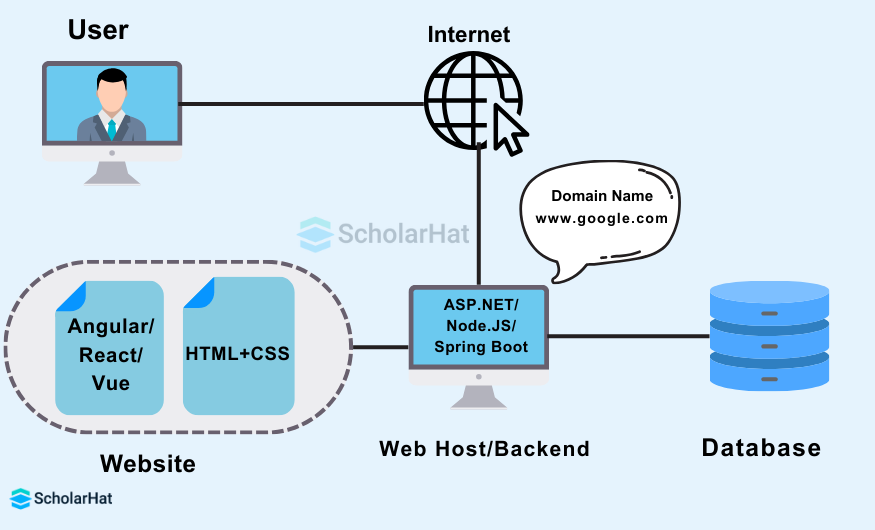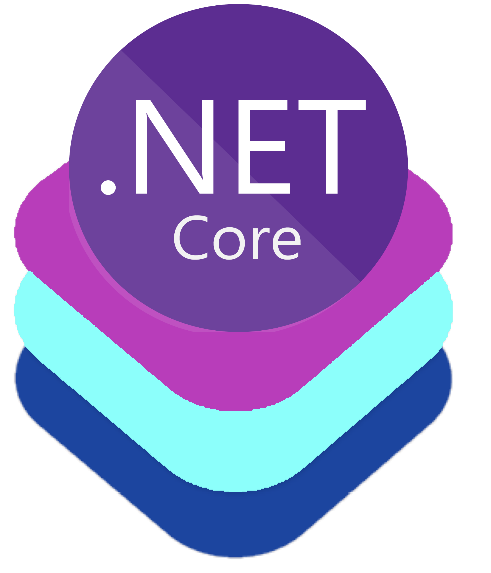28
DecBackend Developer Roadmap: The Ultimate Guide 2025
The web development sector is divided into front-end and back-end application development. If you are new to this field, you might not know about these two parts. Let us first get an idea about these. The front-end development is all about what the end-user user sees on the screen in terms of the visual elements and the page designs whereas the backend part is all about the business logic that makes things happen to the front end.
Now, if you have made up your mind to become a backend web developer, we are here to help you out. In this full-stack development tutorial, we will offer a step-by-step guide to explain programming languages, tools, and technologies utilized for backend development. This article will offer you a detailed backend developer roadmap to learn clearly about the procedure and requirements of backend web development.
Read More - Full Stack Developer Interview Questions
What is Backend Development?
It is the thing that the users don’t see directly or interact with and contains the activities that are happening at the back of the door that occur when the user performs any type of action on a particular website or webpage.

The backend consists of three main parts
- Database - It helps us store a large amount of information in an efficient and structured way as compared to storing that information in a text file.
- Server - A server is a computer that receives user requests through the front-end interface (also known as the client) and responds with a result computed by the application.
- Application - It is a computer program that listens for requests on the server, retrieves information from the database, and sends a response through the server.
Who is a Backend Developer?
Backend developers are primarily responsible for writing code for the functioning of the web applications as how they were supposed to be. This is the code that drives the web server. However, besides writing backend code, the backend developers are also accountable for developing APIs and maintaining the database.
Read More: What is Backend Development? Who is a backend Developer?
Backend Developer Roadmap
The roadmap inculcates several areas of focus like programming languages, databases, web frameworks, DevOps, and security. It also emphasizes the importance of learning web frameworks such as Django, Spring Boot, and Express.js for building scalable and efficient web applications.
1. Basic Internet, OS, and Frontend Knowledge
You must know the basics of the internet, like how it works, how to work on browsers, how DNS works, and what is HTTP or HTTPS. The foundational understanding of operating systems like memory management, terminal usage, OS working, basic terminal commands, threads and concurrency, and I/O management. After completing this, you should gain knowledge about the basics of the front end and back end. The front end will help you understand how you will connect the front end with the back end.
2. Learn Programming Languages
A backend developer must know programming languages to implement their coding skills. You can learn programming languages like Java, Javascript, C#, Python, Ruby, and PHP. Do mastery in at least one programming language. After that, it will be easy for you to learn the other ones.
3. Learn the Backend Framework
Frameworks in backend development are considered essential skills. Thus, it's a prominent step in the backend developer's roadmap. Frameworks reduce the amount of code that one has to write. Thus making programming more efficient.
Some of the common frameworks that are used in backend development are:
- ASP.NET Core
- Node.js
- Spring Boot
- Laravel
- Ruby on Rails
- Django
Read More - Full Stack Developer Salary
4. Version Control System
A version control system is a tool that helps both the backend and frontend developers collaborate and control the changes made over time. It also gives details about what kinds of changes should be made and by whom. Therefore, a version control system enhances the project speed by allowing developers to interact, remove the possibility of errors, and recover the code if any accident occurs.
The following are the version control platforms that are often used for backend development.
- Git
- GitHub
- GitLab
- BitBucket
5. Databases
Databases are collections of organized data stored on a computer system. There are several types of databases, including relational, NoSQL, object-oriented, hierarchical, network, and graph databases. Relational databases use a tabular structure to organize data, while NoSQL databases are designed to handle large volumes of unstructured data.
6. APIs
API stands for Application Programming Interfaces. It is an intermediary between the services that entail their collaboration. Backend developers use APIs to ensure connections between different applications and services and, in turn, offer an improved user experience on the front end.
Some of the common APIs that you need to be familiar with are:
- REST
- SOAP
- JSON
- XML-RPC
- AES
7. Caching
Caching is the process of storing frequently accessed data in a cache to improve the performance of an application. The aim behind caching is to increase the performance of data retrieval while minimizing the need to obtain the underlying hoarding layer, which is very slow to process.
The caching techniques and tools that one should be aware of are:
- CDN
- Server Side
- Client-Side
- Redis Cache
8. Testing
Backend testing is the procedure of checking the database or the server side of the web application. It involves verifying that the application behaves as expected and meets the required specifications. The important point is to determine the efficiency of the database layer while simultaneously ensuring that it is free from any data corruption or loss.
Following are the testing methods used by backend developers:
- Integration testing
- Unit testing
- Functional testing
9. Code Analysis Tools
They are software tools that analyze source code to detect potential errors, bugs, and security vulnerabilities. They provide automated and systematic approaches to detect issues in code that may not be apparent to the developer during manual testing.
Some of the most extensively used code analysis tools are:
- SonarLint
- JUnit
- JaCoCo
- PMD
- SonarQube
- Qualys
- Jenkins
10. Architectural Patterns
Architectural patterns are the reusable solutions to the frequently occurring architectural problems in software development. They provide a set of predefined structures, components, and rules that help developers design software systems that are scalable, maintainable, and efficient. It ensures consistency, reduces development time, and improves software quality.
11. Authentication Method
Authentication methods verify the identity of a user or a device that wants to avail of the resources, data, or application. This authentication phase offers a user identity to the security system.
Some of the authentication methods used by backend developers are:
- MD5
- SHA
- Scrypt
- Bcrypt
- RSA
12. Get Certified
Earning a certification may improve your chances of getting hired or promoted.
ScholarHat offers you various certification courses to make your dream of becoming a backend developer true.
- Full-Stack .NET Developer Certification Training Program
- Advanced Full-Stack .NET Developer Certification Training
- Java Programming Course
- C++ Programming Course
- Data Structures with Java Certification Training
13. Build a Nice Portfolio with Projects
As a software developer, building a strong portfolio with projects is crucial for demonstrating your skills and experience to potential employers or clients. Focus on creating high-quality projects that solve real-world problems and demonstrate your expertise.
14. Take an Internship
Internships are an amazing opportunity to gain real-world experience, learn new skills, and network with industry professionals. Through internships, you get to work on real projects and collaborate with experienced developers, explore different industries and technologies, gain valuable experience, expand your network, and increase your chances of success as a software developer.
15. Develop a Good Network
Developing a good network is crucial for finding job opportunities and advancing your career. Networking involves building professional relationships with people in your industry, such as colleagues, mentors, recruiters, and alumni. Networking can be done both in-person and online through social media platforms such as LinkedIn.
| Read More: Full Stack Developer Roadmap |
Summary
So, now I hope that you have a complete vision regarding the journey of becoming a backend developer. The only requirement here is dedication and consistency. There may come many a time that you won't be able to understand many concepts. Just remain patient and try to understand calmly. You will surely get through it.
| Download this PDF Now - Backend Developer Roadmap PDF By Scholarhat |
FAQs
- Database
- Server
- Application
- CDN
- Server Side
- Client-Side
- Redis
Take our Fullstack skill challenge to evaluate yourself!

In less than 5 minutes, with our skill challenge, you can identify your knowledge gaps and strengths in a given skill.












